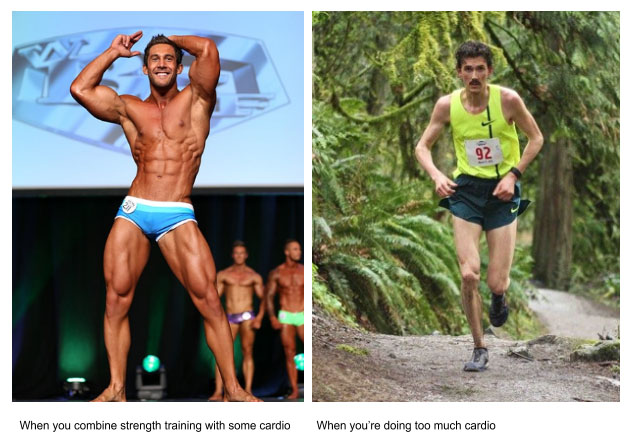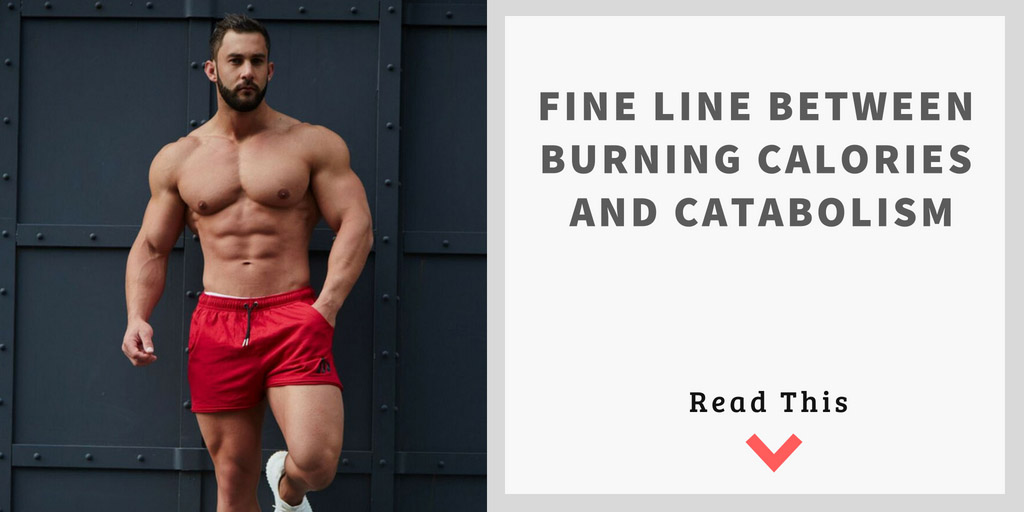Ask any old-school meathead in the gym about cardio training, and you might get a huff and a grunt. Not everybody includes cardio training in their program. And it’s possible to get lean, shred body fat, and transform your body without doing a ton of cardio.
But what if you actually enjoy cardio?
Your first stop in the gym is the treadmill, elliptical trainer, or the spin class with the instructor who barks commands like a drill sergeant. “Stand up. Pedal faster. Don’t stop.” Or you’re quick to carve out time for a jog, walk in the park, or bike ride across town.
Cardiovascular exercise is a great way to burn calories and fat, but there’s a law of diminishing returns when it comes to this type of training.
Are you a cardio multi-tasker?
 When Team RSF Member Julian Rypalla started training, he had to figure out how to get through the cardio sessions. Sound familiar?
When Team RSF Member Julian Rypalla started training, he had to figure out how to get through the cardio sessions. Sound familiar?
If you’ve ever thought cardio was boring, just one of those chores, or a necessary evil to get results, you’re not alone.
At first, it was nothing but work. 50 minutes slogging away on the treadmill watching the clock tick by. Then Julian found a creative way to level up his cardio workouts by multi-tasking.
Instead of just staring into nothingness, watching TV, or dwelling on the sometimes mind-numbing experience of cardio training, Julian started reading while walking on the treadmill. The 50 minutes started to whiz by. He started training longer, and then he began to think about a critical question:
Is there any harm in doing more cardio?
It depends on your goal. If you’re training to run a 26.2-mile marathon, more cardio training will help you build cardiovascular strength and endurance, and get lean to run more efficiently.
But if you’re aiming to build muscle, or get lean and preserve the muscle mass you currently have, there’s a tipping point where too much cardio starts to work against all your hard work in the weight room.
It’s called catabolism.
Here’s what happens with too much cardio training: Excessive cardio uses up your available stores of energy (which typically comes from carbohydrates and fat), and forces your body to find another energy source…lean muscle tissue.
And when that happens, it can create a cascade of other problems like:
- Decrease in muscle mass
- Less muscle definition
- Loss of strength
- Increase risk for injury
- Slower metabolism
If you need a visual for what this looks like over time, compare the physique of someone who lifts and does some cardio, to the person who runs a lot of miles:

5 ways to combat catabolism
Unlike some old-school meatheads, I think everybody should include cardio training as part of a well-rounded fitness program.
- Cardio training helps strengthen your heart, lungs, and muscles.
- It’s an effective way to burn calories and fat.
- And it makes it a lot easier to go for a hike, or play a game of pick-up basketball without gasping for air.
But if your primary goal is to build muscle and a create a better looking body, more and more cardio isn’t the best way to get there. Here are five ways to combat catabolism to get better results:
1. Shorten cardio sessions, increase intensity
 While some people like Julian develop an affinity for cardio training, a lot of people find it a chore. The good news is that you can get better results in less time, with high-intensity interval training. Hustle, and a 20-minute HIIT session can be just as effective as an hour of steady-state cardio without the same catabolic effect.
While some people like Julian develop an affinity for cardio training, a lot of people find it a chore. The good news is that you can get better results in less time, with high-intensity interval training. Hustle, and a 20-minute HIIT session can be just as effective as an hour of steady-state cardio without the same catabolic effect.
2. Adjust your calories and macros
If you’re committed to logging more miles, or time on the treadmill or cycle, you’ve got to counter the excess cardio with additional calories. Using all your energy stores for long cardio sessions leaves you with an empty tank that won’t support muscle growth and repair.
And that means you need to eat more calories and right combo of macronutrients (protein, carbs, and fat). I’d recommend getting help from a trainer or nutritionist to help you figure out the right balance.
3. Lower reps, heavier lifts
 Here’s another way to combat catabolism if you want to level up your cardio. When you’re in the gym, go with compound movements (squats, deadlift, bench press, shoulder press, etc.), lift heavy, and lower your reps to 6-8 per set. It’s an effective way to damage muscle fibers and stimulate growth and repair.
Here’s another way to combat catabolism if you want to level up your cardio. When you’re in the gym, go with compound movements (squats, deadlift, bench press, shoulder press, etc.), lift heavy, and lower your reps to 6-8 per set. It’s an effective way to damage muscle fibers and stimulate growth and repair.
4. Incorporate cardio into your lifting session
Shave just 15 to 30 seconds off the normal 1 to 2-minute rest periods between sets when you’re lifting, and you’ll get a cardio workout, too. You may have to lift slightly lighter loads, but you’ll be burning extra calories and fat, so more after-lifting cardio won’t be as necessary.
5. Track your process
 Keep track of your weight, body fat percentage, lean muscle mass, and waist circumference. Take progress pics from week to week for visual comparison. If you’re not losing fat or improving muscle definition, those are indicators that can help you figure out if you should add more cardio to your training plan, or scale back.
Keep track of your weight, body fat percentage, lean muscle mass, and waist circumference. Take progress pics from week to week for visual comparison. If you’re not losing fat or improving muscle definition, those are indicators that can help you figure out if you should add more cardio to your training plan, or scale back.
More cardio isn’t always the answer
If you think more cardio is the answer to fitness, fat loss, and building muscle, think again. Some cardio is beneficial for building a better physique, but too much may start to undo all your hard work in the gym.
Are you doing too much cardio to build muscle? Let’s discuss on Facebook.
References
1. Gummelt, D. (2015). The role of metabolism in reaching your goals and improving fitness. American Council on Exercise. From: https://www.acefitness.org/education-and-resources/lifestyle/blog/5695/the-role-of-metabolism-in-reaching-your-goals-and-improving-your-fitness
2. Boutcher, S. (2011). High-intensity intermittent exercise and fat loss. Journal of Obesity. From: https://www.ncbi.nlm.nih.gov/pmc/articles/PMC2991639/
3. Fry, A.C. (2004). The role of resistance exercise intensity on muscle fiber adaptations. Sports Medicine, https://www.ncbi.nlm.nih.gov/pubmed/15335243

